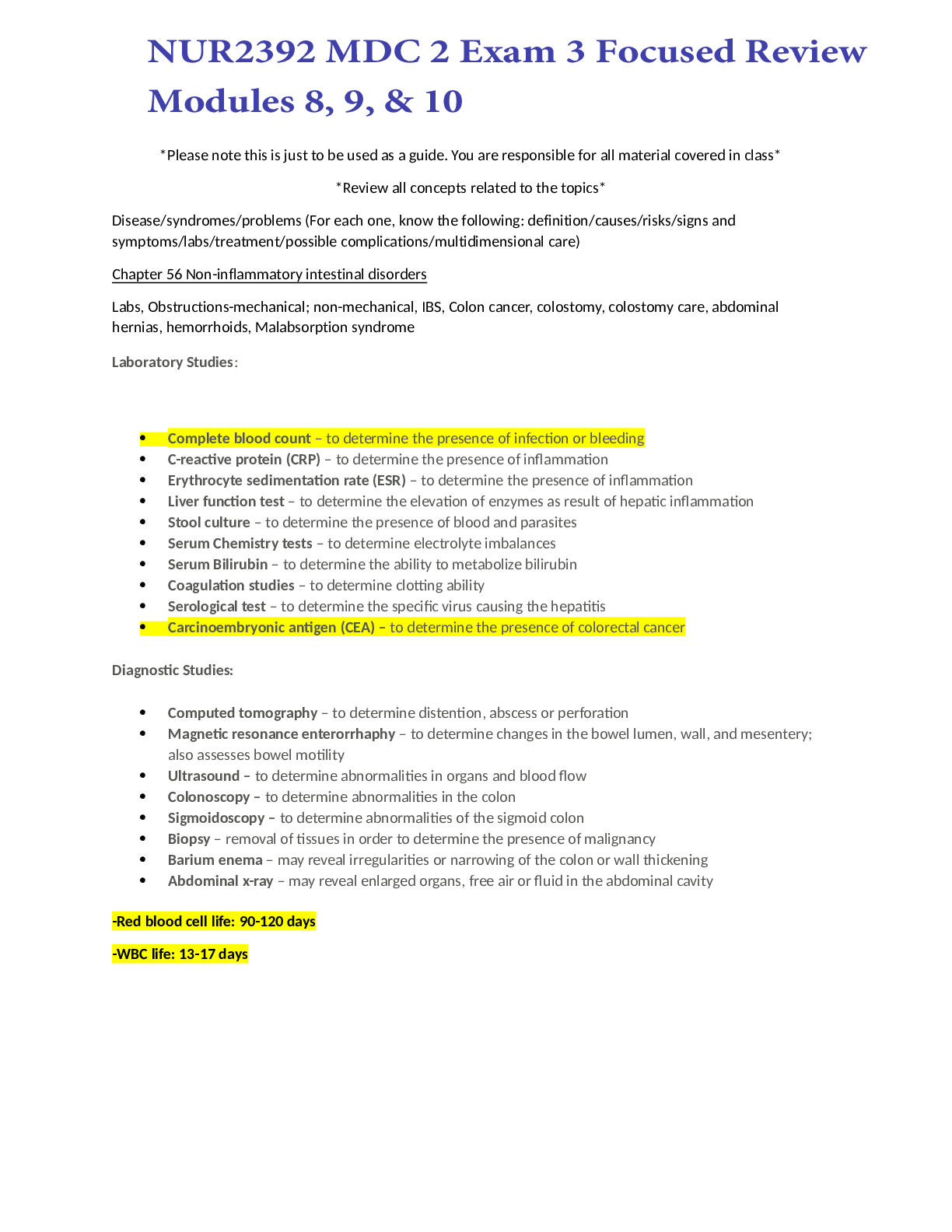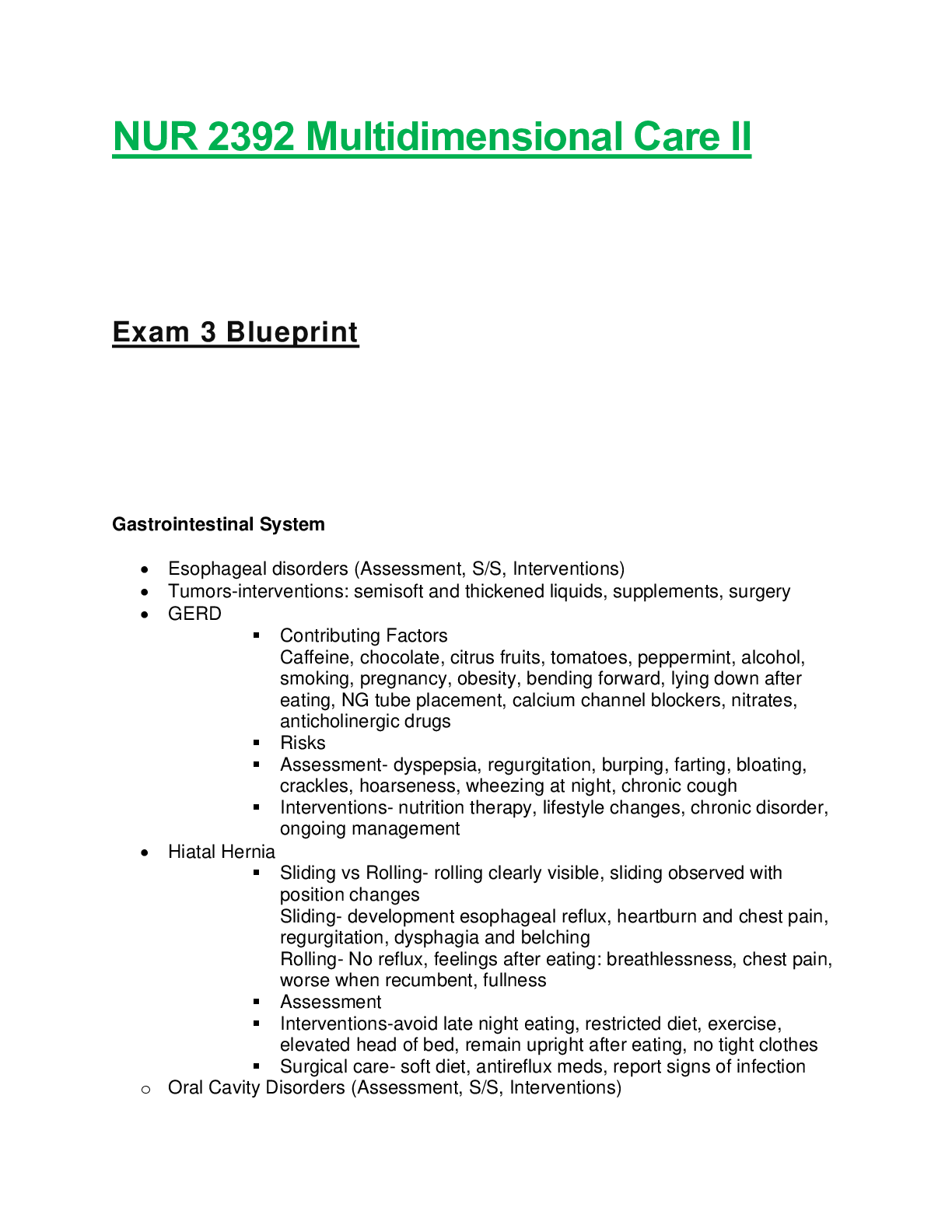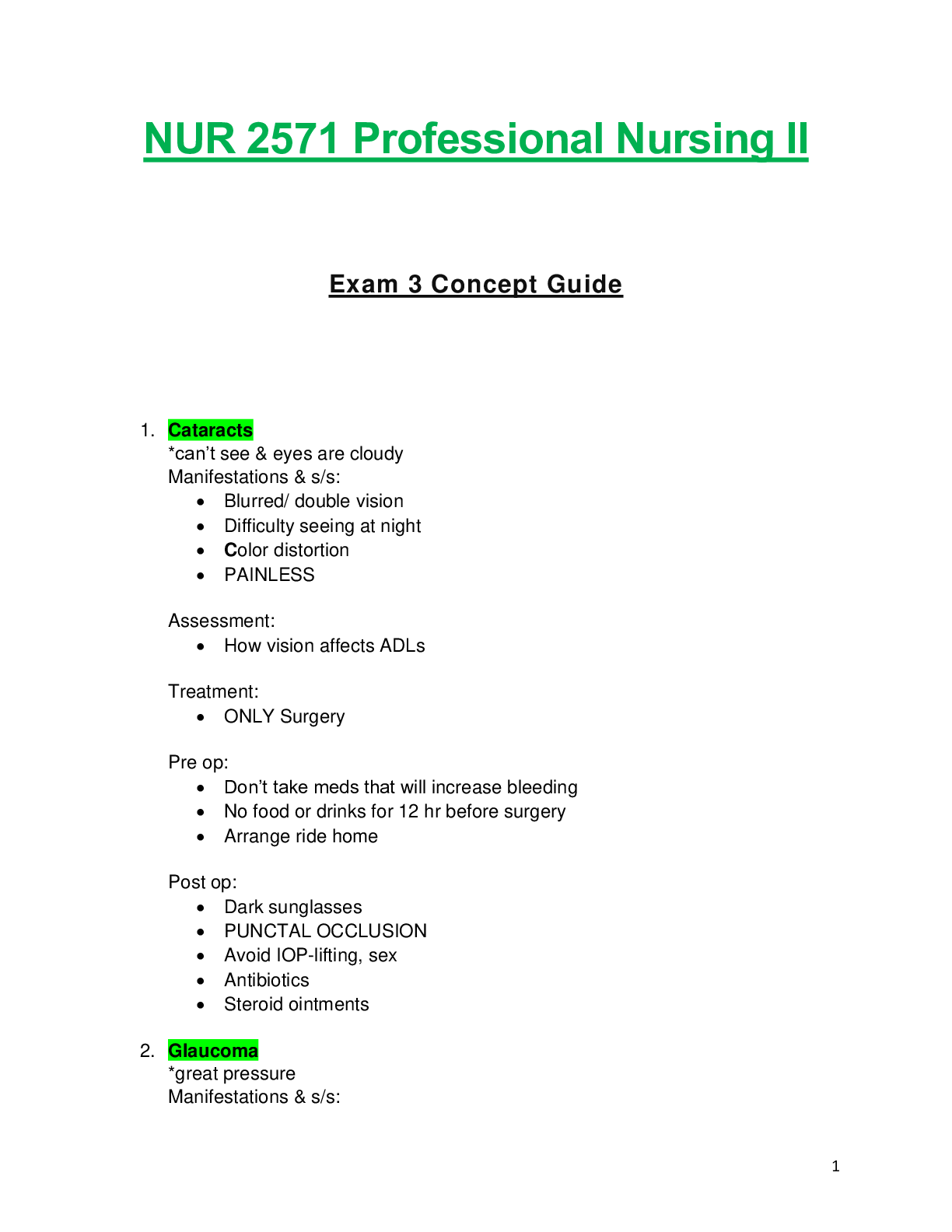*NURSING > EXAM REVIEW > NUR2392 MDC 2 EXAM 3 FOCUSED REVIEW MODULES 8, 9 and 10 (All)
NUR2392 MDC 2 EXAM 3 FOCUSED REVIEW MODULES 8, 9 and 10
Document Content and Description Below
*Please note this is just to be used as a guide. You are responsible for all material covered in class* *Review all concepts related to the topics* Disease/syndromes/problems (For each one, know the... following: definition/causes/risks/signs and symptoms/labs/treatment/possible complications/multidimensional care) Chapter 56 Non-inflammatory intestinal disorders Labs, Obstructions-mechanical; non-mechanical, IBS, Colon cancer, colostomy, colostomy care, abdominal hernias, hemorrhoids, Malabsorption syndrome Laboratory Studies: Complete blood count – to determine the presence of infection or bleeding C-reactive protein (CRP) – to determine the presence of inflammation Erythrocyte sedimentation rate (ESR) – to determine the presence of inflammation Liver function test – to determine the elevation of enzymes as result of hepatic inflammation Stool culture – to determine the presence of blood and parasites Serum Chemistry tests – to determine electrolyte imbalances Serum Bilirubin – to determine the ability to metabolize bilirubin Coagulation studies – to determine clotting ability Serological test – to determine the specific virus causing the hepatitis Carcinoembryonic antigen (CEA) – to determine the presence of colorectal cancer Diagnostic Studies: Computed tomography – to determine distention, abscess or perforation Magnetic resonance enterorrhaphy – to determine changes in the bowel lumen, wall, and mesentery; also assesses bowel motility Ultrasound – to determine abnormalities in organs and blood flow Colonoscopy – to determine abnormalities in the colon Sigmoidoscopy – to determine abnormalities of the sigmoid colon Biopsy – removal of tissues in order to determine the presence of malignancy Barium enema – may reveal irregularities or narrowing of the colon or wall thickening Abdominal x-ray – may reveal enlarged organs, free air or fluid in the abdominal cavity -Red blood cell life: 90-120 days -WBC life: 13-17 days NUR2392 MDC 2 Exam 3 Focused Review Modules 8, 9, & 10 Obstructions -Intestinal contents continue to accumulate above the obstruction which results in the distention of the abdomen. Results in decreased absorption of fluid and electrolytes. Mechanical Obstruction: The bowel is physically blocked by problems outside of the intestine (adhesions), in the bowel wall (Crohn’s disease), or in the intestinal lumen (tumors). Complications of appendicitis Hernias Fecal impactions Intussusception: telescoping of a segment of the intestine within itself Volvulus (twisting of intestine) Nonmechanical: (paralytic ileus or a dynamic ileus) peristalsis is decreased or absent as a result of neuromuscular disturbance, resulting in a slowing of the movement or a backup of intestinal contents. Complication of surgery: day 3/4, no bowel sounds Hypokalemia Signs and Symptoms Obstipation: severe constipation Abdominal distention Peristaltic waves Borborygmic: gurgling or rumbling noise High-pitched bowel sounds/none at all Tachycardia Hypokalemia Complications Metabolic alkalosis/acidosis Hypovolemia Peritonitis (more so from strangulated obstruction) Septic Shock Increased intrabdominal pressure or ACS Interventions Non-surgical management o NG tube: at least every 4 hours, assess the patient with an NGT for proper placement, tube patency, and output (quality and quantity). Also assess for peristalsis. [Show More]
Last updated: 1 year ago
Preview 1 out of 14 pages

Buy this document to get the full access instantly
Instant Download Access after purchase
Buy NowInstant download
We Accept:

Reviews( 0 )
$9.50
Can't find what you want? Try our AI powered Search
Document information
Connected school, study & course
About the document
Uploaded On
Sep 12, 2023
Number of pages
14
Written in
Additional information
This document has been written for:
Uploaded
Sep 12, 2023
Downloads
0
Views
155









